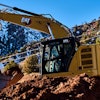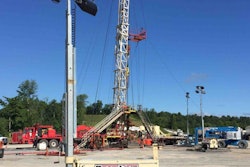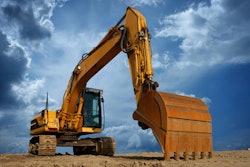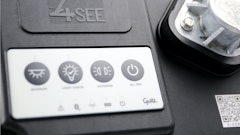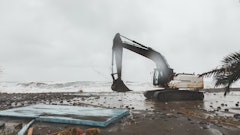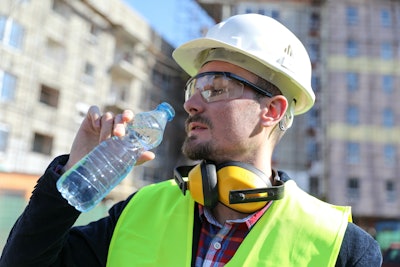
Construction workers often face challenging working conditions, including extreme heat and humidity in outdoor environments.
These conditions can lead to dehydration, heat illness, and heat-related injuries if proper hydration and rest measures are not followed, posing serious risks to both the worker and work site safety.
The situation is further complicated by increasing global temperatures, limited data on heat deaths and injuries, absent or generalized regulations, and limited resources with ineffective tools to address the underlying issues.
However, by increasing industry awareness of heat safety, advocating for regulatory improvements, and implementing next-generation wearable devices, researchers, clinicians, and industry leaders can develop advanced heat safety strategies that contribute to state benchmarks, improve regulatory decisions, and keep workers safe and productive.
Cost of Heat
The rising cost of heat risk is a significant concern, as average global temperatures are projected to rise ~4 degrees Fahrenheit through 2050.
Elevated temperatures are, in turn, expected to lead to more than 50 additional high-heat days per year, resulting in 450,000 heat-related injuries per year and over $500 billion in labor-related productivity costs.
Many regions of the United States are already experiencing extended periods of high day and night-time temperatures, which have increased in frequency, duration, and magnitude according to the World Health Organization. Despite representing only ~6% of the total workforce in the United States, construction workers accounted for more than one-third of the total heat-related deaths due to factors such as physical exertion, extreme environmental conditions, non-breathable protective clothing, and radiating heat sources.
A survey conducted by the Center for Construction Research and Training (CPWR) showed that 52% of construction workers have experienced at least one symptom of heat illness.
OSHA has published similar findings highlighting significant heat-related challenges facing the construction industry. Incidents attributed to excessive heat exposure are not limited to the construction industry.
The number of heat injuries is often underreported across sectors. A recent study concluded that the actual number of heat-related illnesses and injuries is about 50 times higher than typically reported.
For instance, a worker who falls off a ladder and breaks their shoulder would likely have their injury categorized as a fall, even if they were experiencing the effects of heat illness, which led to the fall.
Heat-Risk Guidelines
There are five states in the United States that have standing occupational heat stress standards: California, Oregon, Colorado, Minnesota and Washington.
While there is opportunity to establish standards that align with the present-day realities of climate change, there are significant challenges that lie ahead in creating standards that are relevant across different work types and environments without having more insight into the daily exposures and subsequent physiology effects.
Individual workers experience a broad range of physiological responses to heat exposure due to several factors, including heat acclimatization status, hydration state, fitness level, body mass, dietary habits, sleep cycles, alcohol consumption, workload strain, consecutive workdays, personal protective equipment (PPE), temperature, humidity, and more.
Recent studies around managing hydration and heat-related illnesses in the workforce are beginning to show that Heat Index measurements often under-predict the risks of heat exposure, as this metric alone does not account for the physical exertion and thermal microenvironment impacting workers.
Taken together, these variables give rise to a broad range of physiological effects, which limit the utility of ‘one-size-fits-all’ recovery and hydration strategies.
Tools for Improving Hydration Health In addition to heat safety protocols, various tools can help mitigate the risks of heat exposure, such as cooling vests, fans or misters, ice water buckets, air conditioning, and wearable biosensors that measure core temperature and electrolyte intake.
However, these solutions could be challenging to implement due to their invasive mode of operation.
Alternatives that rely on skin surface temperatures are more readily deployed, but may experience accuracy or latency issues.
Additionally, conventional fluid and electrolyte replacement strategies based on sweat-sensing or urinalysis, which are employed in sports science laboratories, are critical to proper individualized hydration, but it has proven to be difficult to implement for workers operating in remote environments.
Wearable technology adoption is growing at a staggering pace with 10 million U.S. consumers adopting wearable sensors just in the last year.
Novel sweat-sensing and physiology-sensing technologies, like the Apple Watch, Kenzen and Connected Hydration platforms, are providing real-time physiological insights for individual workers.
These wearable classes of continuous monitoring sensors are poised to help construction workers by providing personalized physiological data, and in the case of Connected Hydration, hydration recommendations to predict and prevent injuries.
The cloud infrastructure and predictive hydration analytics in combination with the rapid miniaturization of biosensors are creating a digital health ecosystem for the connected worker, with real-time site, regional, and global data tracking across all remote environments.
With global temperatures continuing to climb, the economic and health costs of heat exposure are expected to rise rapidly over the next few decades.
The technical and behavioral challenges inherent in new technology adoption are being addressed across multiple studies and field trials highlighting the potential improvements in safety and elevated awareness needed to effect change.
Wide-scale adoption of next-generation wearable biosensors and the physiological data that they enable, represent compelling tools that could empower individual workers in the construction sector and beyond, with predictive and preventative hydration insights to combat the ever-growing effects of heat exposure nationally and globally.


